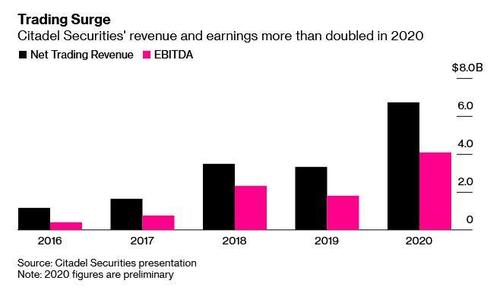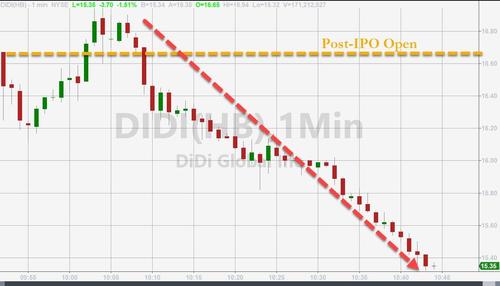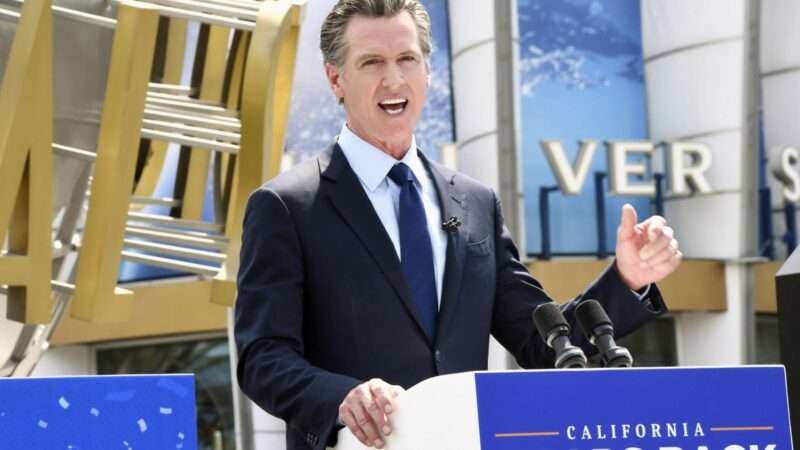Is FOSTA a failure?
The federal law concerning commercial sex ads was pitched and passed by Congress with extreme urgency, as activists and politicians insisted it was absolutely necessary for stopping sexual violence and exploitation. But FOSTA—short for the Allow States and Victims to Fight Online Sex Trafficking Act—has only factored into one criminal prosecution since its passage in 2018. Meanwhile, it’s made finding and fighting sex criminals more difficult.
The law’s lack of usage and its unintended consequences are the subject of a new report from the Government Accountability Office (GAO), which looked at cases brought by the U.S. Department of Justice (DOJ) against commercial sex ad platforms from 2014 through March 2021.
The Feds Didn’t Need FOSTA
Before and after the passage of FOSTA, the U.S. Department of Justice has preferred to use money laundering and racketeering charges to target adult-advertising platforms for criminal prosecutions.
Since 2014, DOJ has filed at least 11 cases against websites that allowed ads for sex work, leading to the prosecution of 23 people and seven organizations. Only one of these cases—filed in June 2020 against Cityxguide.com—has utilized FOSTA.
The first DOJ case was filed in June 2014 against myredbook.com. The second came in 2015, against rentboy.com. Next up: Backpage.com. (This tally does not count state prosecutions DOJ assisted with but did not prosecute on its own, such as the 2016 takedown of Seattle’s The Review Board.)
In spring 2018, the DOJ filed three cases involving Backpage. According to FOSTA advocates, prosecuting Backpage was the main reason FOSTA was needed. But this was never true—as evidenced by the fact that the site was seized and those affiliated with it charged before FOSTA became law.
Nor has the DOJ needed FOSTA to target Backpage descendants. Since FOSTA’s passage, the DOJ has initiated six more criminal prosecutions of commercial sex platforms. Five out of these six did not involve FOSTA charges.
DOJ officials told GAO that this may be partly because of the law’s newness but also because they’ve seen so much success using the old statutes. Racketeering, money laundering, and conspiracy statutes have long been used by the federal government to target prostitution and those who enable it.
But FOSTA was also aimed at prostitution broadly—not just sex trafficking, though this more salacious element was the near-exclusive focus of advocates, media, and legislators pushing for the new law.
Prostitution—which is not a federal crime—is often a consensual matter between two adults. By contrast, sex trafficking by definition involves either an adult being forced, coerced, or defrauded into prostitution or someone under age 18 engaging in prostitution (on their own accord or via force, fraud, or coercion). “While prostitution and sex trafficking both involve commercial sex activity, sex trafficking is defined under federal law as inherently exploitative,” explains the GAO report.
FOSTA dealt with both prostitution and sex trafficking, creating the new federal crime of owning, managing, or operating “an interactive computer service […] with the intent to promote or facilitate the prostitution of another person.” It also carved out an exception to Section 230, the federal communications law that shields websites from some liability for user-generated content. Under FOSTA, Section 230 does not apply in civil lawsuits involving claims of sex trafficking or in state criminal prosecutions involving allegations of sex trafficking or managing a website that promotes prostitution.
States Didn’t Need FOSTA
FOSTA’s change to Section 230 was one long pushed for by state attorneys general.
Before FOSTA, it was already a federal crime to knowingly advertise a sex trafficking victim. And, as we’ve seen, the DOJ could also go after websites for prostitution ads by using money laundering, conspiracy, and racketeering charges. But until FOSTA, Section 230 precluded state attorneys general and private actors from successfully taking websites to court for merely running ads that later led to sex crimes. State prosecutors that tried it—including now-Vice President Kamala Harris—kept losing in court.
Attorneys general tend to flock toward law enforcement issues that can get them lots of press and allow them to seize ample assets or negotiate big settlements. Yet here was a hot-button issue—sex trafficking and ads that facilitated it—perfect for getting attention and making money, with just one thing—Section 230, “the Internet’s First Amendment“—perceived as standing in their way.
So, for years, state attorneys general begged Congress to change federal law so they could ignore Section 230 when it came to cases involving sex ads. FOSTA granted them this power.
Yet since FOSTA was passed more than three years ago, states have declined to file civil suits or criminal charges against adult-ad platforms. Instead, they’ve moved on to targeting deep-pocketed and mainstream tech companies such as Facebook and Google with antitrust lawsuits (and pushing further erosion of Section 230).
Two of the main premises for passing FOSTA were that the law was needed to target Backpage and that state attorneys general were missing a crucial tool. Neither justification holds up.
Still, FOSTA wouldn’t be a complete failure if it accomplished another goal: fighting sex trafficking. And yet…
FOSTA Didn’t Fight Trafficking (But Backpage Did)
FOSTA and the takedown of Backpage have made finding and fighting sex criminals more difficult, according to the GAO report.
Since FOSTA’s passage, the commercial sex ad market has become more highly fragmented and more likely to be based overseas. This “heightens already-existing challenges law enforcement face in gathering tips and evidence,” the report says. Those running the newer platforms often “host servers abroad, reside abroad, use offshore bank accounts and financial institutions, or introduce third parties to attempt to obscure or distance themselves from the day-to-day operation of their platforms, according to DOJ officials.”
Whereas sites like Backpage and Craigslist were willing to work with legal authorities—reporting suspicious ads, turning over information relevant to prosecutions, etc.—the new crop of commercial sex ad platforms are much less responsive and helpful. As a result, prosecuting their users has become more difficult, as has finding the victims of sex trafficking.
“According to a 2019 FBI document, the FBI’s ability to identify and locate sex trafficking victims and perpetrators was significantly decreased following the takedown of Backpage.com,” states the GAO report. “According to FBI officials, this is largely because law enforcement was familiar with backpage.com, and backpage.com was generally responsive to legal requests for information.”
In contrast, “obtaining evidence from entities overseas may be more cumbersome and time-intensive, as those who control such platforms may not voluntarily respond to the legal process, and mutual legal assistance requests may take months, if not years, according to DOJ officials.”
The FBI also told GAO that it’s seen more sex ads migrate to “social media, dating, hookup, and messaging/communication platforms.” A combination of factors—including greater anonymity on these sites, auto-deleting options, encrypted messaging, and the large number of such platforms—also makes finding victims and building cases off of them more difficult than it was when a few platforms dominated the sex-ad marketplace.
Civil Suits and Chilled Speech
There are some areas where FOSTA seems to be making a major impact—albeit not necessarily a positive one. In the wake of FOSTA’s passage, a number of platforms have begun to crack down on sex worker posts and/or on sex-related content more generally.
Some platforms—such as Craigslist, which shut down its entire personals section in the wake of FOSTA—admitted to changing their policies in direct response to the law. Many more have quietly cracked down on sexual content.
Such crackdowns can be seen in changes to terms of service, and in countless tales of sex workers having their social media posts deleted or accounts canceled.
Evidence suggests these changes haven’t prevented predators—who can still easily use private chat and message functions—from using these services to recruit and communicate with victims. But it has made it harder for independent sex workers to use online platforms (which, incidentally, could put them in danger by cutting into their incomes and necessitating riskier methods of finding and communicating with customers), and led to a general chilling of sexuality-related speech and imagery on the public parts of these websites.
This sort of sanitization of the internet has long been a goal of many of the groups that pushed for FOSTA, including the National Center on Sexual Exploitation (NCOSE), a conservative morals group formerly known as Morality in Media. And making it harder for anyone (including consenting adults) to engage in sex work is also on the agenda of many FOSTA proponents.
On these fronts, FOSTA has been a success. It’s just not the success story that supporters promised, which is that FOSTA would help sex workers and sex trafficking victims.
So far, no victims have obtained restitution as a result of FOSTA. “As of March 2021, one individual had sought civil recovery in federal court under section 3 of FOSTA, but no damages were awarded and the case was dismissed,” according to the GAO report.
Recently, however, NCOSE has been helping orchestrate new federal lawsuits—so far, against Twitter, Pornhub parent company MindGeek, and XVideos—accusing platforms of facilitating sex trafficking. These, too, seem to have serious flaws, and it’s unclear whether they’ll accomplish anything but helping NCOSE get good press.
The Success of FOSTA
So, is FOSTA a failure? If you accepted political grandstanding around the issue, then yes. FOSTA has failed at the goals publicly stated by most activists, attorneys general, and lawmakers who pushed for its passage.
But there was always a reason to suspect those publicly stated goals. For one, the DOJ was already having success prosecuting prostitution content, had already seized Backpage without it, and had actually urged against FOSTA’s passage. For another, Congress had just passed a sex-ad law a few years earlier (the 2015 SAVE Act) that had gone completely unused.
In addition, politicians pushing for the law had refused to listen to sex workers and non-religious victims groups—who opposed the law en masse—about the negative consequences it would have on their work and safety and who challenged the claim that this law was for their protection. Meanwhile, the groups they did listen to were largely radical feminists and Christian conservatives, openly dedicated to eradicating all sex work and pornography and prohibiting free speech online around even non-criminal displays of sexuality.
For these activist groups, the fight for FOSTA was a great opportunity to get invited to testify before Congress, get their names in the press, and raise money, all while tacitly pressuring internet companies to start cracking down on all sorts of sexual content. And for politicians—in Congress and state prosecutors’ offices—it was a great way to grandstand about fighting crime and helping women without having to make any politically difficult decisions.
FOSTA may not have been legally necessary or socially useful. But in certain prohibitionist and public relations terms, it’s been a resounding success.
from Latest – Reason.com https://ift.tt/3x7YTm5
via IFTTT








